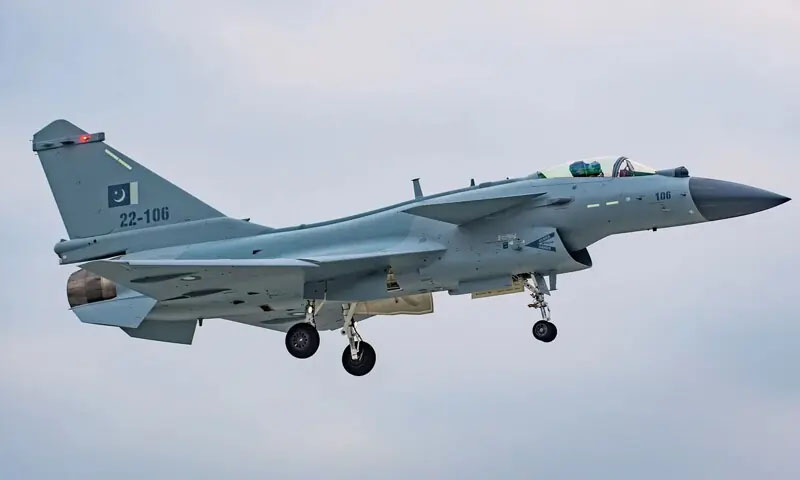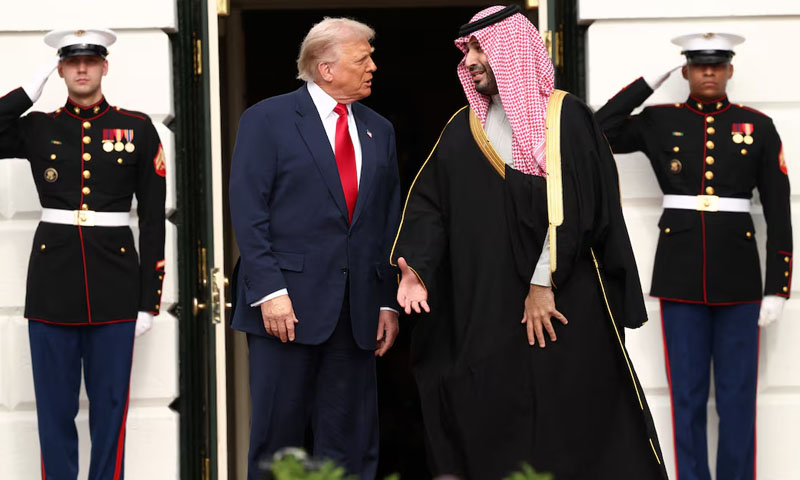- Reuters
- Today
Pakistan military superiority over India in four-day clash, says US report
-

- Web Desk
- 1 Hour ago

WASHINGTON: A report submitted to the US Congress has said that Pakistan achieved “military superiority” over India during the four-day conflict that took place in May this year.
The report, submitted on Tuesday by the US–China Economic and Security Review Commission, highlighted that Pakistan’s military success over India in the clash showcased the effectiveness of Chinese weapons. The commission was established to report on the impact of trade and economic relations between the US and China on national security.
Initially, Pakistan said it had shot down five Indian aircraft, later revising the number to seven. Islamabad denied losing any of its own planes and stated that after targeting three airbases, it struck 26 Indian targets. Former US President Donald Trump recently commented that eight aircraft were effectively downed.
The commission’s annual report referred to the May conflict and noted that China used the occasion to test and enhance its defensive capabilities.
The report also highlighted China’s role in the conflict, stating that it attracted global attention because Pakistan relied on Chinese weapons and allegedly benefited from Chinese intelligence.
The report cited India’s claim that China provided Pakistan with real-time information on Indian military positions, while noting that Pakistan denied the allegations and China neither confirmed nor denied them.
According to the report, China expanded its military partnership with Pakistan in 2025, further increasing tensions with India.
The report noted that in November–December 2024, China and Pakistan conducted three-week-long “Warrior-VIII” counterterrorism exercises, and in February 2025, the Chinese Navy participated in Pakistan’s multinational “Aman” exercises. These drills demonstrated growing defense cooperation between the two nations. Indian analysts considered the exercises a direct security threat to India and a strain on bilateral relations with China.
Referring to the May conflict, the report stated that while calling it a “proxy war” would exaggerate China’s role, Beijing took the opportunity to test and showcase the modernization of its weapons.
As Pakistan’s largest defence supplier, China provided around 82 per cent of Pakistan’s defence imports between 2019 and 2023.
During the May clash, China’s advanced military systems — including the HQ-9 air defense system, PL-15 air-to-air missiles, and J-10 fighter jets — were used in combat for the first time, providing real-world operational experience.
The report also mentioned that in June, China offered Pakistan 40 fifth-generation J-35 fighter jets, KJ-500 aircraft, and ballistic missile defense systems. In the same month, Pakistan announced a 20 per cent increase in its 2026 defence budget, raising defense spending to USD 9 billion despite overall budget cuts.
In the weeks following the conflict, Chinese embassies publicly praised the performance of their weapons in the India–Pakistan clash, aiming to boost arms sales.
The report also cited French intelligence claims that China attempted to block sales of French Rafale jets while promoting its J-35s, spreading false information and using fake social media accounts to make AI-generated or video game images appear as debris from Indian aircraft destroyed by Chinese weapons.
The May conflict erupted after an attack on tourists in Indian-occupied Kashmir, which India blamed Pakistan for without evidence. Islamabad strongly denied the allegation and called for neutral investigations.
However, on 7 May, New Delhi conducted airstrikes in Punjab and Azad Jammu and Kashmir, initiating the four-day clash. Both sides launched retaliatory strikes on each other’s airbases until a ceasefire was brokered by US intervention on 10 May.




